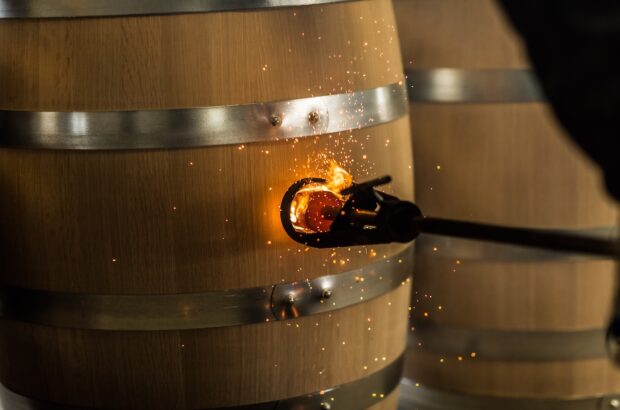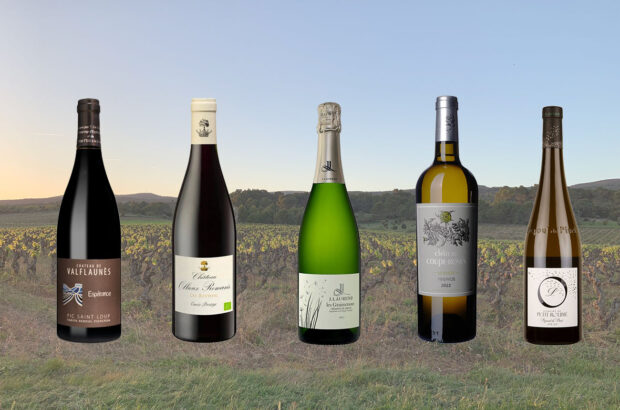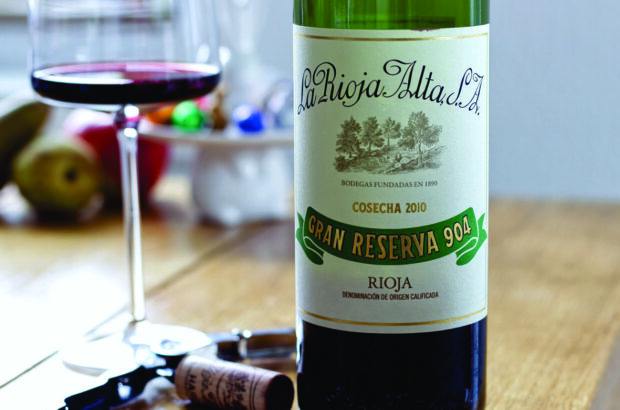The cultural history of Strasbourg – one of France’s largest cities, and the capital of Alsace – is reflected in its mix of architectural styles. Medieval timber-framed dwellings in the touristy ‘Petite France’ quarter denote a thousand-year link to the Germanic Holy Roman Empire, as does the Strasbourg cathedral: built between 1015 and 1439, it is considered an exceptional example of Gothic architecture. After the Thirty Years War, Louis XIV made Alsace part of the French kingdom, only for it to later change hands twice with Germany in the 19th and 20th centuries, which explains some impressive Wilhelmine buildings at Place de la République.
Such architectural variety matches a hodge-podge of the region’s vineyard soils: from sandstone and marl to limestone and granite. Located in northeastern France, Alsace is one of France’s driest and sunniest wine regions; its cool summer nights and warm days permit the grapes to ripen evenly.
Alsace wine: the facts
Area planted About 15,600ha
Appellation AP officially instituted in 1962; AP Alsace accounts for about 70% of production
Alsace Grand Cru AP Introduced in 1975, progressively expanding to 51 sites classified as such, accounting for about 5% of total production
Authorised grand cru grapes Gewurztraminer, Muscat, Pinot Gris and Riesling, but blends are allowed in Altenberg de Bergheim and Kaefferkopf, and Sylvaner is permitted only in Zotzenberg
Crémant d’Alsace Sparkling made by the traditional method, accounts for about 25% of production
Vendanges Tardives On wine bottles designates sweet wines made from grapes picked when overripe
Sub-regions Two: the southern Haut-Rhin, which counts 37 grands crus, and the northern Bas-Rhin with 14
Vineyard visits

Riquewihr town as seen from the Famille Hugel Schoenenbourg vineyard
A 20-minute drive from Strasbourg, and you’re in wine country. Many of the quality producers are family-owned wineries, opening doors for wine tastings in their home estates, but be sure to schedule an appointment beforehand.
Old wooden casks form part of the scenery at Domaine Frédéric Mochel in the village of Traenheim, west of Strasbourg, where 14 generations of the family have lived since 1669. In my most recent visit this year, I met New York importer Bradley Cohen, who fell in love with the wines during a Zoom tasting in 2021. Indeed, top Alsace restaurants feature Domaine Frédéric Mochel wines, and do not miss the bold and elegant dry Altenberg de Bergbieten Grand Cru Riesling. An expansive tasting room includes comfortable seating where the Mochel family offers bread and cheese to go with the wines.
‘A 20-minute drive from Strasbourg and you’re in wine country’
A five-minute drive east from there, Mélanie Pfister of the eponymous estate in Dahlenheim counts among the most talented Alsace winemakers. The eighth generation of her family to run the estate, she crafts dry wines – from superb sparklers to pristine Pinot Gris – which also are featured in top Alsace restaurants. Try her marvellous Engelberg Grand Cru Riesling in the tasting room that once was the 18th-century vinification cellar. If the weather is sunny, find time for a 20-minute walk from town to the 300m-high south-facing Engelberg vineyard, where you not only see vines on the limestone/clay terroir, but also appreciate a great view of Strasbourg’s cathedral.
Heading south

The beautiful village of Hunawihr, in southern Alsace. Credit: Leonid Andronov / Alamy Stock Photo
An hour’s drive from Dahlenheim is the southern Alsace village of Hunawihr. It was thanks to Romain Iltis, sommelier at two-star Michelin Villa René Lalique (see below), that I discovered Domaine Mader’s Rosacker Grand Cru Riesling: the wine was so clean, crisp and pure that a week later I visited the estate, where co-owner Jérôme Mader emphasises wet stone minerality. Every single wine that I tried at the family winery was delicious, but Rosacker has the coolest limestone terroir in Alsace: favourable for climate change, Mader explained.
Drive another 15 minutes further south to the village of Niedermorschwihr to visit one of the most celebrated estates in Alsace these days. At Domaine Albert Boxler (+33 [0]3 89 27 11 32), you cannot help but admire the adjacent – and steep (45°) – granite Sommerberg vineyard. Oriented directly south, and rising nearly 400m in altitude, it is the source of splendid Rieslings that you can taste at the estate. It is hard to beat the beautiful aromatic minerality and subtle citrus notes encountered in these wines. Try the old-vine Sylvaner and the excellent crémant, too.
No visit to vintners in Alsace would be complete without seeing Famille Hugel in Riquewihr, a beautiful medieval town along the Alsace Wine Route. Founded in 1639, the estate is still 100% family owned and is now managed by its 12th consecutive generation. A wide range of wines, including Alsace Grand Cru, are sold worldwide: widely recognised for their high quality. Open every day of the year, the cosy tasting room awaits you at the foot of cobbled streets near wood-timbered shops in the village centre. Surrounding vineyard slopes accentuate the charm of the setting. Inside, don’t miss a tour of the cellars, full of large oak barrels dating back to the 18th century. Indeed, the ‘S. Caterine’ cask from 1715 has been named the world’s oldest working cask by the Guinness World Records, according to the estate.
And if you missed any wineries in your tour, back in Strasbourg L’Alsace à Boire is dedicated to Alsace wine, although I am surprised that it took so long for the region’s capital to have such a wine bar (it opened in 2021). But now locals and tourists can discover most Alsace Grand Cru appellations without having to leave Strasbourg. There are some excellent sparkling wines, too – industrial versions of Alsace crémant can be downright average, but many producers excel. Just ask the bartender.
(Long) Weekend options from Strasbourg
After marvelling at its beautiful interior, climb the 330 steps up the cathedral of Notre-Dame de Strasbourg, the sixth-tallest church in the world.
Near European institution buildings – Strasbourg is headquarters for the Council of Europe and hosts monthly EU Parliament sessions – visit the Parc de l’Orangerie, the city’s oldest park, with sprawling floral grounds surrounding the Pavillon Joséphine, a fine example of early 19th-century neo-classical architecture. Visit the mini zoo, picnic near the lake and waterfall or just take a relaxing walk – or even invigorating jog.
Wine bar urge? Strasbourg’s Ill Vino on a barge offers a modern, fun ambience – the name refers to the Rhine tributary. Take a deep dive into Alsace wine at L’Alsace à Boire (see above).
Rent a car and visit wineries along the 170km-long picturesque Alsace Wine Route, but make sure you book any visits in advance.
Shop at Beauvillé, famous producer of luxurious tablecloths and household linens, located in Ribeauvillé, where you’ll also find celebrated wine producer Domaine Trimbach.
Your Alsace address book
Accommodation
Hôtel Cour du Corbeau, Strasbourg
Very close to the cathedral in a setting that dates back to the 16th century, this four- star hotel combines Middle Ages charm with modern amenities. Visiting friends give rave reviews.
Hôtel Léonor, Strasbourg
Opened last year, enjoy casually chic (and comfortable) rooms in what was a central police station in Strasbourg. The elegant façade is a historical monument. Dine at the hotel restaurant, managed by the team from the exceptional two-star Michelin La Fourchette des Ducs.
Les Haras, Strasbourg
Conveniently close to the Petite France quarter, it used to be the 18th-century National Stud Farm and Equestrian Academy, but now impresses with stylish rooms and gorgeous design. Dine at its brasserie, where I often have business lunches for quality and price.
Villa René Lalique, Wingen-sur-Moder
Worth the 45-minute drive northwest from Strasbourg: relax in sumptuous rooms fitted with Lalique crystal decor. Built by René Lalique in 1920, the house has been refurbished as a boutique hotel. Dine at the superb two-star Michelin restaurant, and don’t miss the Lalique museum!
Restaurants
La Fourchette des Ducs, Obernai
Originally built by Ettore Bugatti, founder of the eponymous car company, to receive customers in appropriate style, the gorgeous interior mirrors peerless cuisine and wine at this two-star Michelin restaurant, ideal for dinner after having trekked through southern Alsace wine country.
Le Cerf, Marlenheim
French newspaper Le Monde calls the traditional choucroute of this one-star Michelin restaurant the most successful in France, to which I can attest, as well as to its excellent wine list. A 20-minute drive west from Strasbourg, it is also convenient for its four-star hotel, with a small spa including sauna and hammam.
Les Plaisirs Gourmands, Schiltigheim
Pleasingly economically priced one-star Michelin in this Strasbourg suburb that’s known for its jazz concerts with international stars. €380 for a delicious six-course lunch for three, including two bottles of wine and tips.
Mademoiselle 10, Strasbourg
Casual ambience in the city centre, with a view of the Ill tributary, this is often a top choice for diplomatic lunches. Try the €45 lunch menu.
For more details of the Alsace dining scene, peruse Panos Kakavaitos’ guide to the region’s best bars and restaurants.
Shops & markets
Les Boutiques de l’Aubette features shops at Strasbourg’s Place Kléber in a splendid 18th-century building. Although bombed in the Franco-Prussian war and reconstructed several times since, a more definitive 2008 renovation has made it a Strasbourg shopping highlight, in contrast to the rather ugly Les Halles nearby…
Sometimes called mini-Venice, because the Ill tributary predominates, Strasbourg’s Petite France quarter is invaded by tourists. But it is well worth visiting for its medieval architecture, charming narrow paths, and restaurants, shops and boutiques, from Le Goût du Terroir cheese shop to the lovely Galerie Pascale Froessel. Snack on tarte flambée, washed down with Riesling – or Fischer beer.
Strasbourg Christmas market
The month-long festive event (Le Christkindelsmärik) starts in late November and features a magnificent Christmas tree and ubiquitous holiday decorations that never fail to enchant. Between sips of spicy hot mulled wine, take care to avoid tourist traps among the temporary wooden holiday kiosks that dot the city. If you like foie gras, buy the amazing Champagne and pepper foie gras at the stand in front of the gorgeous Maison Kammerzell in Place de la Cathédrale.
How to get there
Strasbourg is the nearest airport. From Paris, take the high-speed TGV train running daily to Strasbourg, with an average journey time of around two hours.

Credit: Maggie Nelson
Alsace wines: the grapes
Riesling is king, but styles – and terroirs – vary. Either way, dry Riesling from quality producers matches any great dry white in the world.
Gewurztraminer is slightly on the sweeter side, with low acidity, at its best conveying exuberant lychee, rose and ginger aromas. Pairs well with strong cheese or spicy foods.
Pinot Gris tends to be, as the French say, entre deux chaises, as even ‘dry’ it often has sweetish overtones and usually a thicker texture than Riesling.
Sylvaner can be superb from older vines that lend depth to what more usually is light dry white.
Pinot Blanc tends to be soft and rather delicate – and is often underrated.
Muscat, when vinified dry, pairs well with white asparagus, or enjoyed on its own as an aperitif.
For reds, Lucas Alessandri of the Strasbourg Léonor hotel restaurant Mélanie Pfister praises Pinot Noir. I have been sceptical, but climate change seems to be ‘helping’. Never have I enjoyed such fine Alsace Pinot Noir as in recent years, but I would avoid the house reds at most locations. As Burgundy prices scrape ever higher skies, try Pinot Noir from estates such as Domaine Albert Mann and Mélanie Pfister, for example. I had a very good Domaine Boeckel, Oberpfoeller 2019 at Léonor that cost only €46 a bottle, restaurant price.












